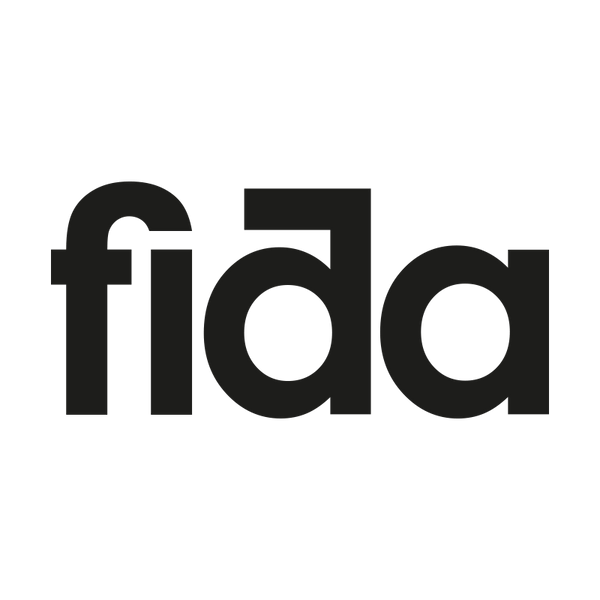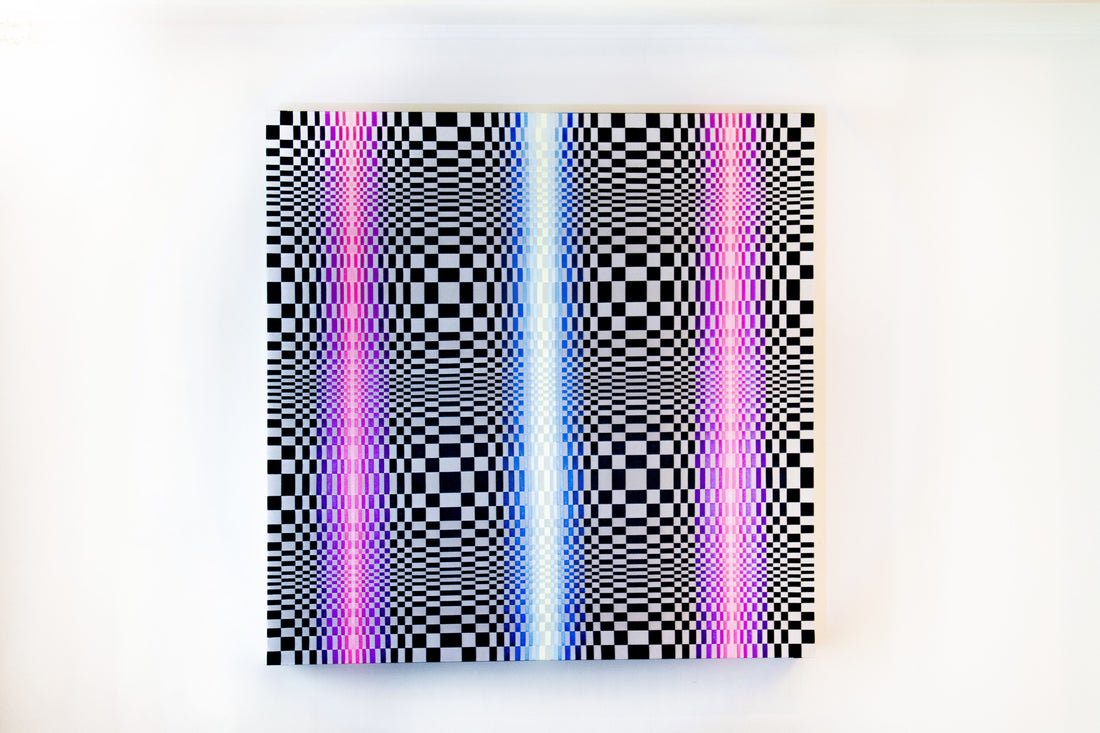Francesco Maccapani Missoni’s world is full of colour and creativity: each of his stunning textile artworks playfully tricks the eye, while sharing a personal emotion, place, scent, or sensation.
How did your journey into textile art begin? Your family has a rich history with colour, luxury, and style. Did that influence your artistic vision from a young age?
My art journey started with paper strips, then I started using satin ribbons because I couldn’t make works bigger than 40x40 with paper. I couldn't find the strips I used longer than 54cm, so I started to test different materials until I found satin. I really like the way it plays with light and changes depending on the angle you look from.
For sure growing up in a family like mine helped me to have an artistic vision, but honestly I started to produce my works around 10 years ago, and I was doing them in my free time as a hobby. I never thought of becoming an artist in my young age.

Textile art often requires a great deal of patience and precision. How do you stay motivated and focused during the more labour-intensive parts of the process?
When I work I enter a meditative state, I don't notice the time passing. I can work for 6, 7 or 8 hours straight without realising it. When I start a work I am obsessed with finishing it, and until I have completed it, I can't relax.
What inspired you to experiment with materials like ribbons in your weaving?
I switched to ribbons to be able to make large works. As I said before, with paper ribbons I was limited to making 40x40 or 20x20 works. While satin ribbons come in 20/25 metre rolls, so I can make works as large as I want.

When you begin creating a new piece of art, do you start with a story or concept in mind, or is it the colours and textures that inspire you first? How does the initial spark guide the direction of the work?
Before starting a work, I imagine it in every detail. I am dyslexic and this helps me to have a very developed visual memory. I can visualise the complete work in front of my eyes. In my works I try to capture emotions, places, scents or sensations experienced in different moments of my life.

How has your love of architecture influenced your textile work? Do you find parallels between the structures and designs in architecture and the patterns or forms in your art?
My degree in architecture definitely helped me broaden my artistic vision, especially the 2 years I spent in New York. I went there to write my thesis and in the meantime I worked in a design studio. This experience definitely helped me understand better what I wanted to do in life.
In some of my works I certainly find influences from my architectural studies, with a certain rigour and symmetry. While other works are more based on instinct or the sense of colours.

Is there a book or author that has had a significant impact on your thinking or artistic vision?
As a dyslexic I don’t have a great relationship with books. I remember everything I see and hear, but not what I read. For me it’s always a great inspiration to go to exhibitions and museums, for example, the Venice Biennale, whether it’s art or architecture, is always inspiring to me.

Another one of your passions led you to create The Missoni Family Cookbook, where you share a selection of legendary family recipes. What is your favourite recipe or signature dish?
Eating well and healthily is a great passion of mine. The idea for the book came to me precisely during my time in New York. If I had to choose a recipe from the book, I would say “Coq au vin” with polenta. Probably the only recipe in the book that I have never cooked, because it takes so many hours to make. It is the dish that I asked my grandmother Rosita for most often for my birthday party.

In both cooking and textile design, there’s a focus on layering - whether it's flavours or textures. Do you see any parallels between how you blend colours and patterns in your textile work and how you combine flavours and ingredients in your cooking?
Personally I don't find much similarity, except that cooking is an art in itself. When I cook I use the senses of smell and taste, while for my works I use sight.
If you were to curate an art exhibition that included both textiles and food, what would be the theme, and how would you tie these two creative expressions together?
I would probably associate dishes with works, creating a sensory experience that can allow you to “taste” the works. Trying to create a connection between what you see and trying to bring it back into the flavour and aroma of a dish or a cocktail. So that guest would be able to “taste” what they see hanging on the walls.

What kind of music do you listen to while working on your projects, and how does it influence your creative flow or the mood of the piece you're working on?
Music helps me a lot to create. I named some of my works after the titles of some songs that inspired me during the creative process. I listen mainly to electronic music, but also a lot of indie rock and jazz. I love singers from the 60s and 70s, Italian and non-Italian. Then the music of the 80s immediately takes me back to the years of my childhood.
What do you hope people take away from your work - whether it's an emotional connection, an appreciation for craftsmanship, or a new perspective on textile art?
I like it when people tell me that a certain painting of mine made them feel some emotion or sensation. For me, art should provoke this in people.

See more of Francesco Maccapani Missoni:
Instagram: https://www.instagram.com/fmaccapani/
Email: fmaccapani@mac.com

